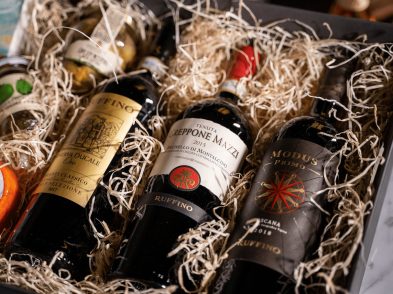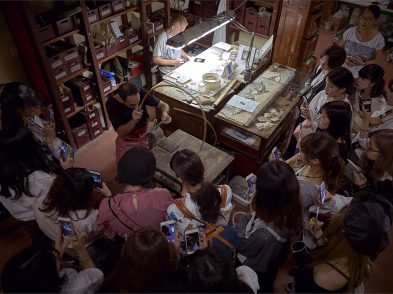When you’re on the prowl for Renaissance fresco paintings in Florence, the church of Santa Maria Novella is the place to go.
You are greeted upon entry by the seminal Trinità fresco of Masaccio, who, with his friend and mentor Brunelleschi, revolutionized the art of painting with the introduction of linear perspective as early as the 1420s. This work’s profound influence can be seen in the extraordinary Tornabuoni and Strozzi Chapels, which contain some of the finest fresco paintings in Florence. Completed within ten years of each other, the two fresco cycles are radically different in style and content, vividly contrasting compositions that reflect the dramatic story of Florence in the last years of the fifteenth century.
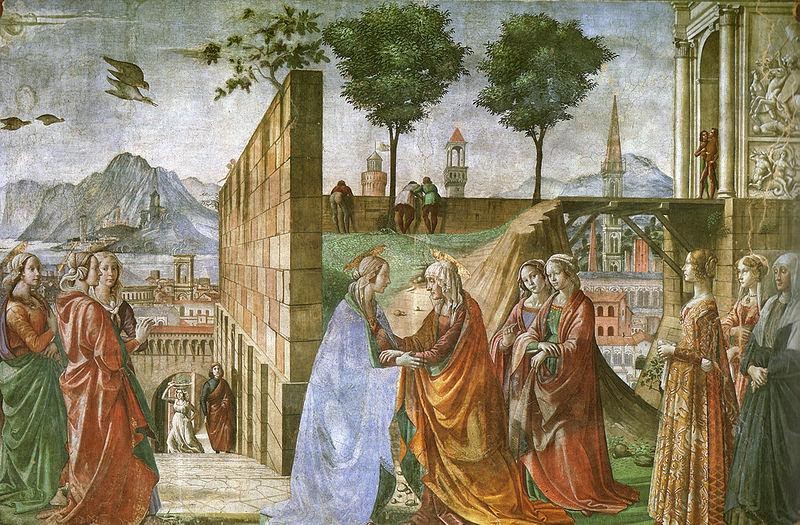
Domenico Ghirlandaio, Visitation
In 1485, Giovanni Tornabuoni, Lorenzo de’ Medici’s uncle, commissioned Domenico Ghirlandaio to redecorate his family chapel with a series of frescoes depicting scenes from the lives of the Virgin and the Baptist. These beautifully detailed paintings offer a glimpse into the life and times of their patron, featuring numerous portraits of individuals in the Tornabuoni and Medici circle, placed in sumptuous domestic interiors and landscapes, a riot of secular life which often overshadows the religious messaging.
Lorenzo il Magnifico died in 1492, two years after the chapel was completed, and in 1494 the idealised world presented in Ghirlandaio’s frescoes was challenged by the rise to power of Fra Girolamo Savonarola. The fiery preacher cut a deal with the invading Charles VIII to spare Florence from the ravages of the French army, and the Medici were expelled. Savonarola established a radical fundamentalist regime to cleanse Florence of its wanton hedonism.
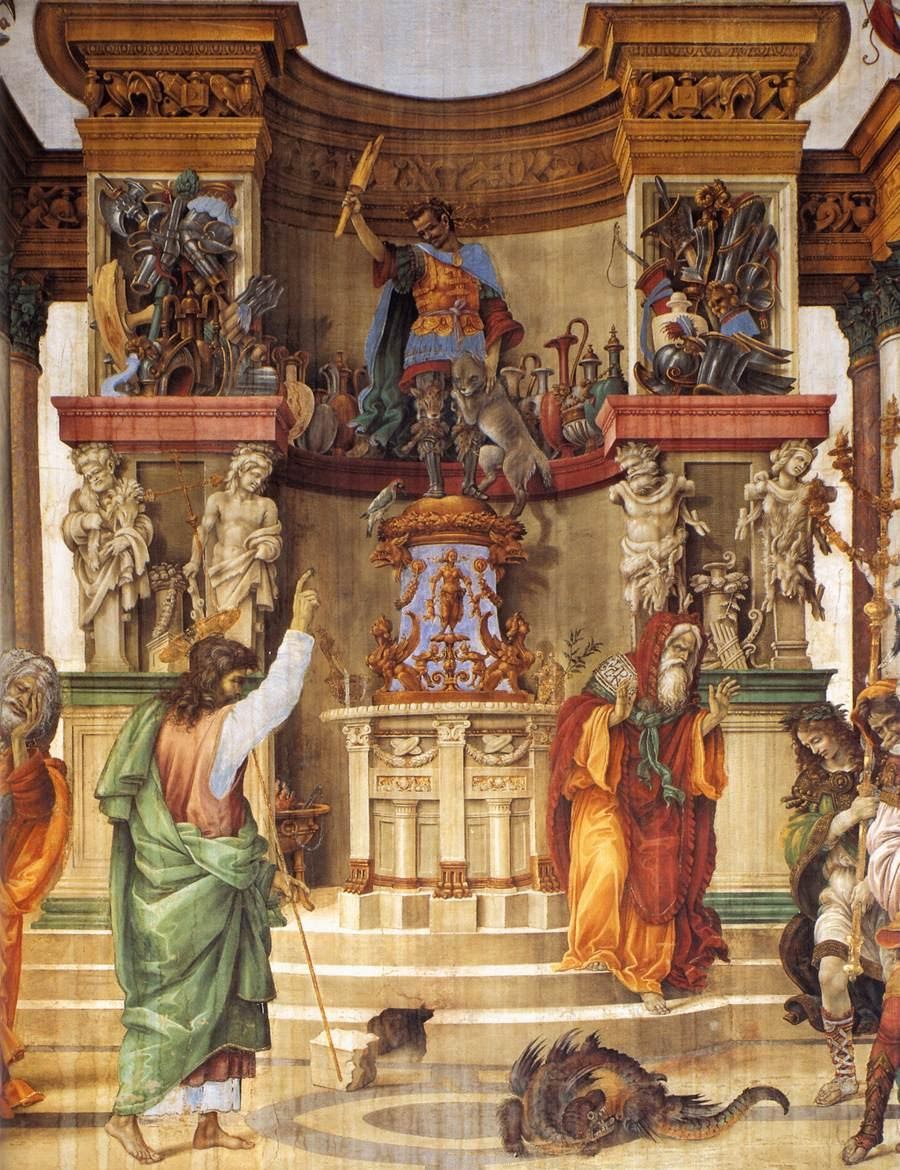
Filippino Lippi, St Philip and the Dragon
This dramatic turn of events is reflected in the frescoes of the Strozzi Chapel. Though Filippo Strozzi commissioned the frescoes just two years later than Tornabuoni, Filippino Lippi took fifteen years to complete the work, and the resulting paintings are suffused with the new austerity promoted by Savonarola’s repressive regime. Trained in Botticelli’s workshop, Lippi extended the maestro’s fluid style to create emaciated and desperate figures, Christians locked in mortal combat with a highly stylised pagan world. Gone is the confident poise and comfortable familiarity of Ghirlandaio’s Medici-Tornabuoni milieu, replaced instead with profound spiritual anguish. It is thought that Botticelli himself threw his own paintings into the infamous 1497 Bonfire of the Vanities, along with the books, musical instruments, cosmetics and tapestries of fellow Florentine supporters, spellbound by the friar’s prophecies and antipapal propaganda. A year later, Savonarola would himself be burned at the stake in piazza della Signoria, clearing the way for the Medici to regain control of the city. Within 50 years they had established the Grand Duchy of Tuscany, which they would rule for two centuries, but that’s another story!
Check out The British Institute of Florence for fascinating online seminars exploring these turbulent times in Florence and Tuscany through the art of the Renaissance in all its glory.
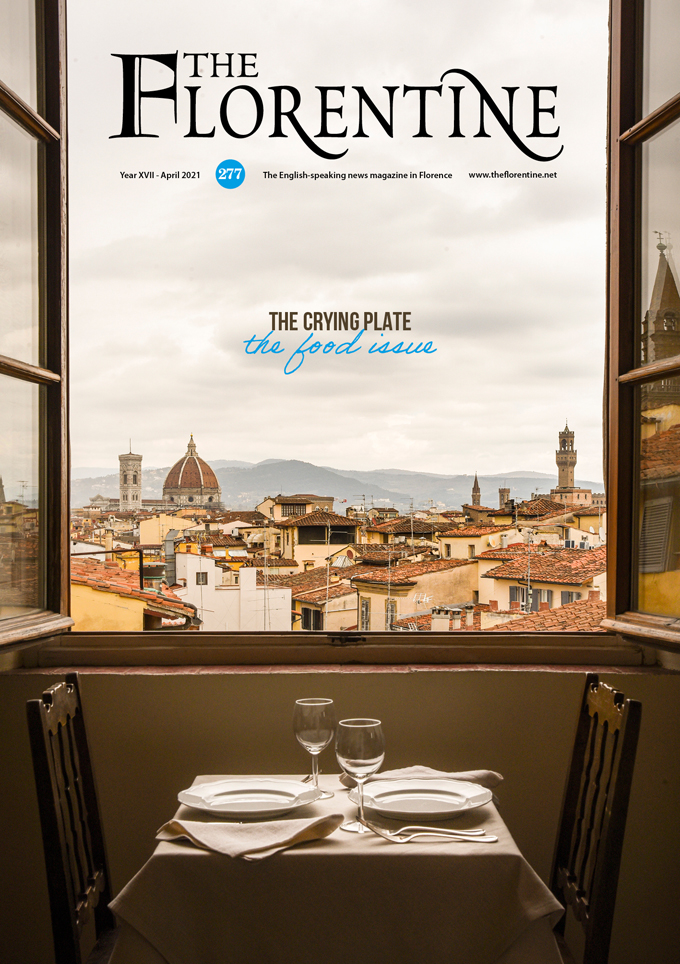
This article was published in Issue 277 of The Florentine.



